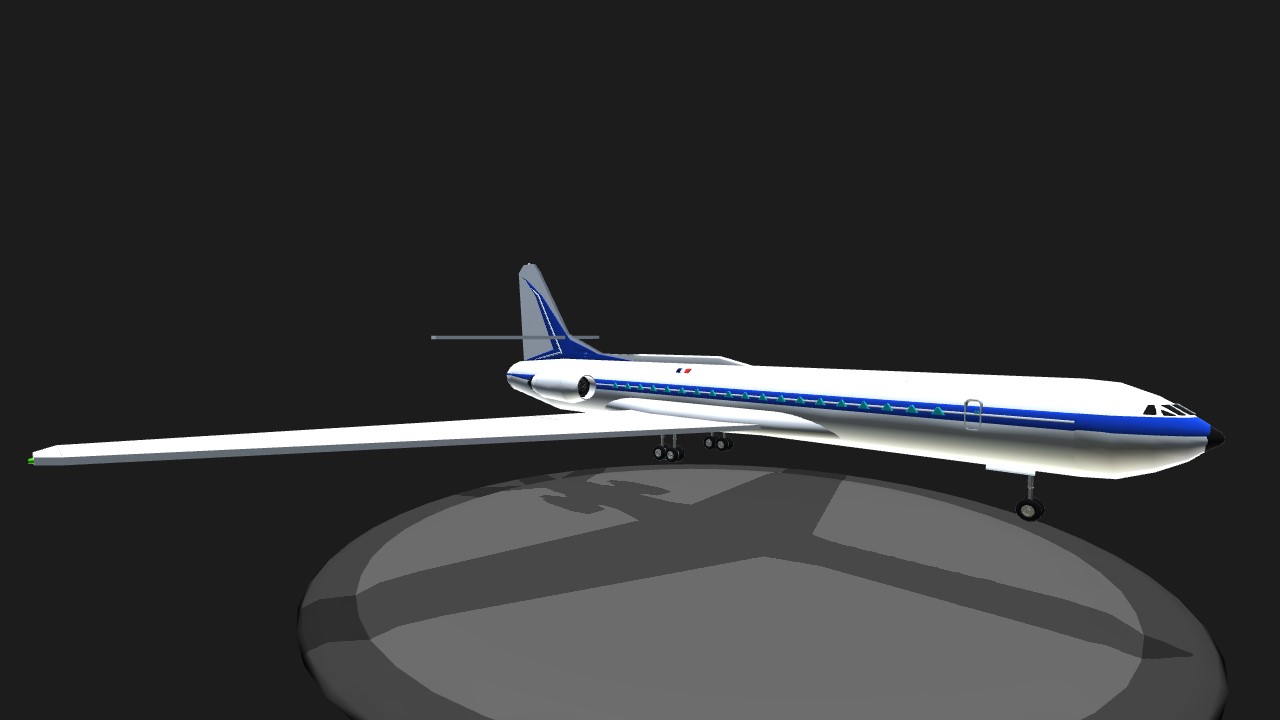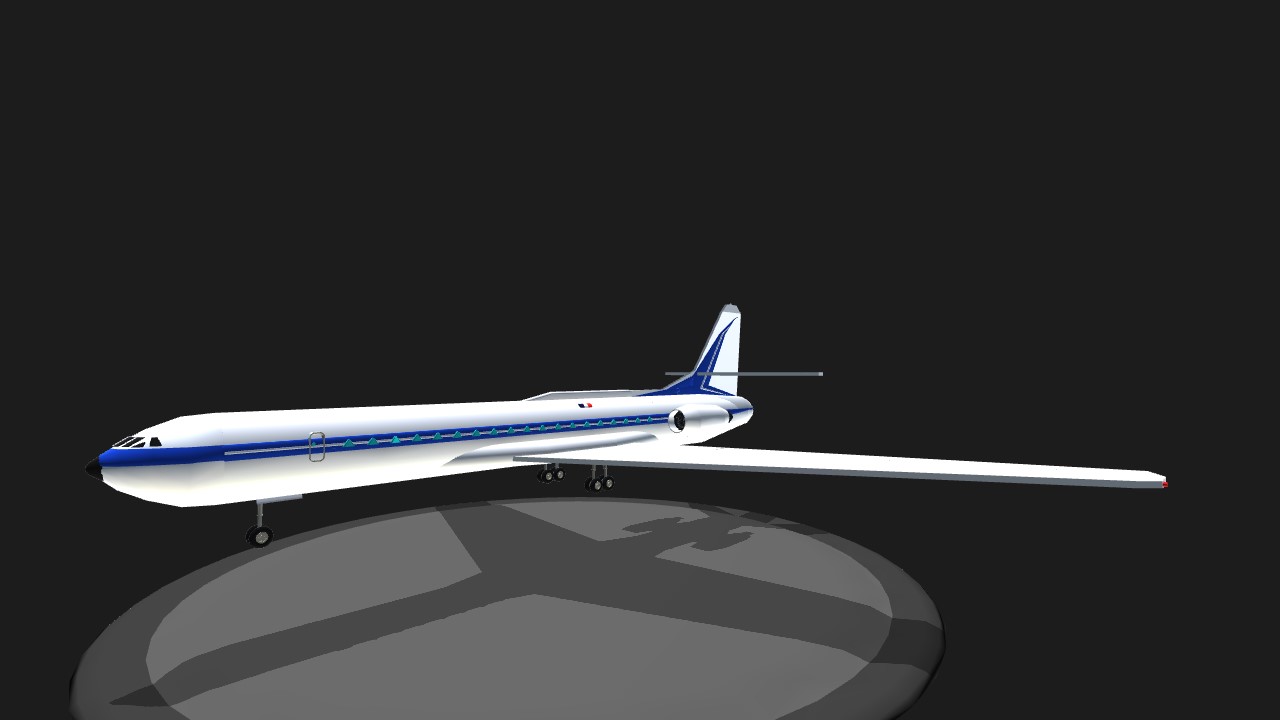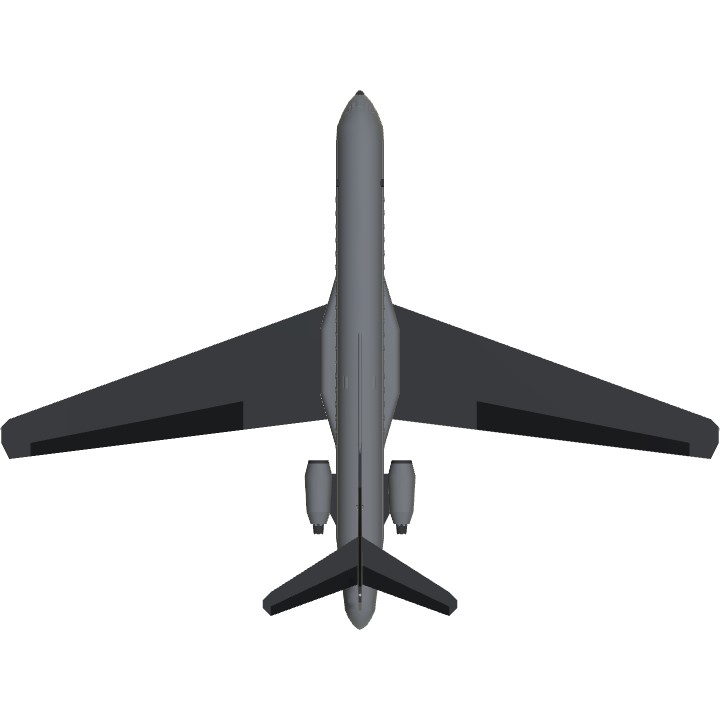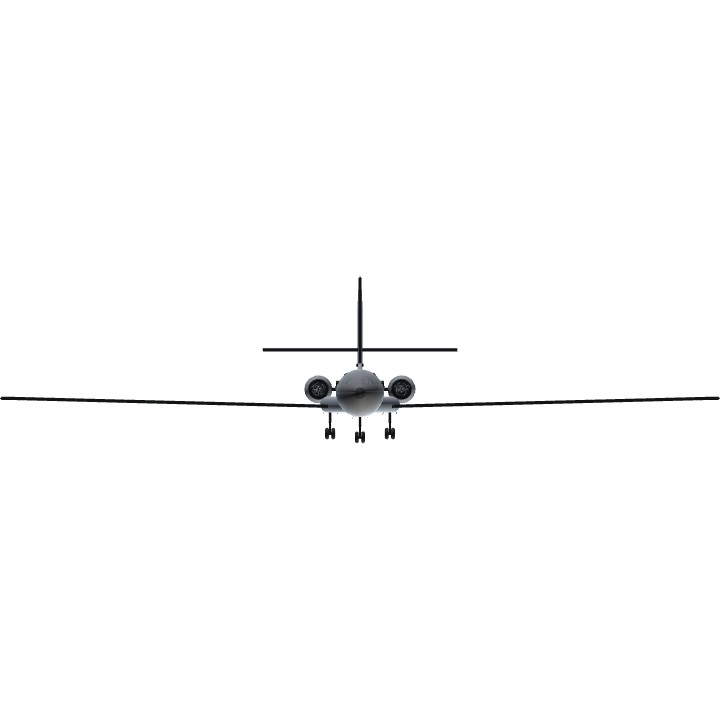Deuxième version de la Caravelle . Nouveauté : Nouvelle décoration avec nuancier Air France . Feux de navigation : touche 7 . Fonction trim . Pilotage très doux . Décollage volet au maximum . Merci a tous pour vos avis positif .
La Sud-Aviation SE 210 Caravelle est un avion de ligne biréacteur, destiné aux itinéraires court et moyen-courriers, produit entre 1958 et 1973 par la société française Sud-Aviation qui devient Aérospatiale en 1970. Premier biréacteur civil au monde produit en série, il présente la caractéristique, innovante pour l'époque, d'avoir les moteurs placés à l'arrière du fuselage et non dans les ailes comme pour le Comet, ou dans des nacelles subalaires comme c'est le cas pour le 707 de Boeing. Conçue pour remplacer les avions à moteurs à pistons tels que le Douglas DC-6, la Caravelle peut emporter, selon les versions, de 80 à plus de 130 passagers sur une distance maximale comprise entre 1 650 et 3 400 km.
La Caravelle est produite en plusieurs versions différentes, les premières recevant des réacteurs Avon, à simple flux, du motoriste britannique Rolls-Royce Limited. Des versions sont préparées spécialement pour le marché américain avec des moteurs General Electric, mais ne rencontrent pas le succès escompté. Il est de même pour les versions ultérieures, équipées de moteurs Pratt & Whitney JT8D.
Le premier prototype réalise son premier vol à Toulouse le 27 mai 1955 et Air France met en service le premier appareil de production, baptisé « Alsace », le 6 mai 1959, suivi par la Scandinavian Airlines System. Avec l'augmentation du trafic aérien dans les années 1960 et 1970, les compagnies se recentrent sur des avions plus gros et de nombreux appareils sont retirés du service ou transférés à des opérateurs charters. Dans les années 1980, les avions de ligne modernes rendent les Caravelle obsolètes et de nombreux exemplaires actifs sont ferraillés ou revendus en Afrique et en Amérique du Sud, où les compagnies ont rarement les moyens d'acquérir des avions récents. Les dernières Caravelle encore en service en Europe sont retirées à la fin des années 1990, quelques-unes continuant à voler au Congo et en Colombie au début des années 2000, la dernière étant retirée en 2005.
English version :
Second version of the Caravelle. New: New design with color chart Air France. Navigation lights: 7 button. trim function. gentle steering. Take-off component to maximum. Thank you all for your positive opinion.
The Sud Aviation Caravelle SE 210 is a jet airliner, designed for short and medium-haul routes, produced between 1958 and 1973 by the French company Sud-Aviation, which became Aérospatiale in 1970. First civilian jet in the world into series production, it has the characteristic, innovative for the time, to have the engine placed in the rear of the fuselage and not in the wings like the Comet or in subalaires platforms as is the case for the Boeing 707. Designed to replace aircraft piston engines such as the Douglas DC-6, the Caravelle can take, depending on the model 80 to more than 130 passengers over a maximum distance of between 1 650 and 3 400 km.
La Caravelle is produced in several different versions, the first receiving Avon reactors, single-flow, the British engine manufacturer Rolls-Royce Limited. Versions are prepared specially for the US market with General Electric engines, but do not meet the expected success. It is the same for subsequent versions, with engines Pratt & Whitney JT8D.
The first prototype realized its first flight in Toulouse May 27, 1955 Air France and activates the first production aircraft, named "Alsace", May 6, 1959, followed by the Scandinavian Airlines System. With the increase in air traffic in the 1960s and 1970s, companies are refocusing on larger planes and many devices are removed from service or transferred to charter operators. In the 1980s, the modern aircraft make them obsolete Caravelle and many copies assets are scrapped or sold in Africa and South America, where companies rarely have the means to acquire new aircraft. The latest Caravelle still in service in Europe are removed in the late 1990s, some still flying in the Congo and in Colombia in the early 2000s, the last being withdrawn in 2005.
English Version:
Second version of the Caravelle. New: New design with color chart Air France. Navigation lights: 7 button. trim function. gentle steering. Take-off component to maximum.
The Sud Aviation Caravelle SE 210 is a jet airliner, designed for short and medium-haul routes, produced between 1958 and 1973 by the French company Sud-Aviation, which became Aérospatiale in 1970. First civilian jet in the world into series production, it has the characteristic, innovative for the time, to have the engine placed in the rear of the fuselage and not in the wings like the Comet or in subalaires platforms as is the case for the Boeing 707. Designed to replace aircraft piston engines such as the Douglas DC-6, the Caravelle can take, depending on the model 80 to more than 130 passengers over a maximum distance of between 1 650 and 3 400 km.
La Caravelle is produced in several different versions, the first receiving Avon reactors, single-flow, the British engine manufacturer Rolls-Royce Limited. Versions are prepared specially for the US market with General Electric engines, but do not meet the expected success. It is the same for subsequent versions, with engines Pratt & Whitney JT8D.
The first prototype realized its first flight in Toulouse May 27, 1955 Air France and activates the first production aircraft, named "Alsace", May 6, 1959, followed by the Scandinavian Airlines System. With the increase in air traffic in the 1960s and 1970s, companies are refocusing on larger planes and many devices are removed from service or transferred to charter operators. In the 1980s, the modern aircraft make them obsolete Caravelle and many copies assets are scrapped or sold in Africa and South America, where companies rarely have the means to acquire new aircraft. The latest Caravelle still in service in Europe are removed in the late 1990s, some still flying in the Congo and in Colombia in the early 2000s, the last being withdrawn in 2005.
Specifications
Spotlights
- Elicushman 9.2 years ago
General Characteristics
- Successors 2 airplane(s)
- Created On Windows
- Wingspan 74.1ft (22.6m)
- Length 55.5ft (16.9m)
- Height 17.1ft (5.2m)
- Empty Weight 21,489lbs (9,747kg)
- Loaded Weight 41,621lbs (18,879kg)
Performance
- Power/Weight Ratio 1.511
- Wing Loading 56.8lbs/ft2 (277.3kg/m2)
- Wing Area 732.8ft2 (68.1m2)
- Drag Points 6307
Parts
- Number of Parts 154
- Control Surfaces 8
- Performance Cost 643







@XEPOH , Thanks for your upvote .
@Vukasin123king , thank for your upvote .